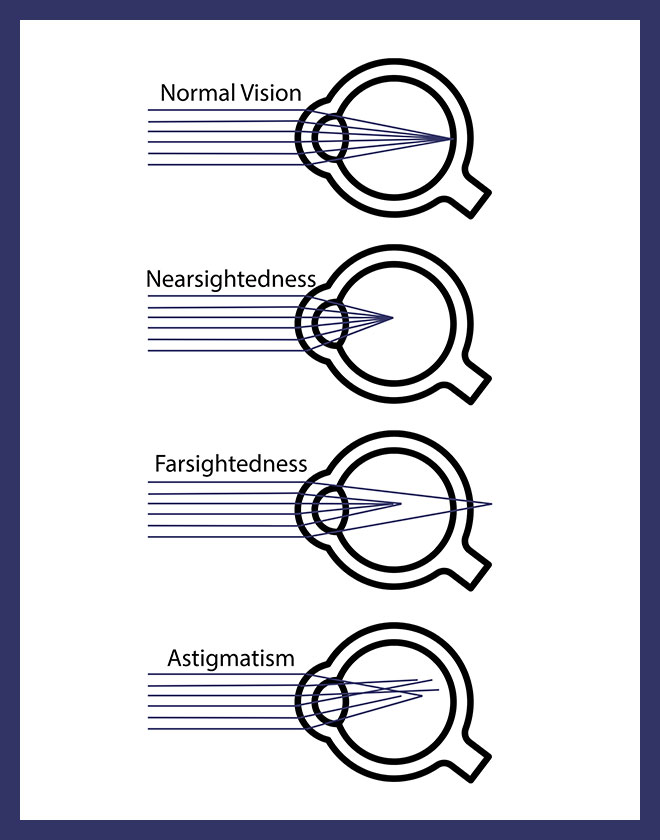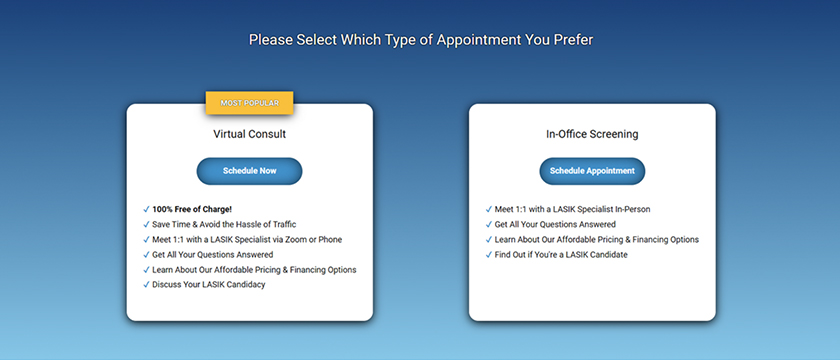
Discover Visual Freedom with LASIK Eye Surgery
Struggling with blurry vision can make even the simplest tasks feel daunting. While contacts and glasses offer some relief, they often come with inconveniences and limitations.
Imagine the freedom of clear vision without the hassle of prescription eyewear. LASIK eye surgery can transform your eyesight in just minutes, empowering you to see the world vividly and effortlessly.
What makes LASIK at Sacramento Eye Conusltants such a great option for better vision? Find out during a free virtual consultaiton.
Book a Free LASIK Screening Take our LASIK Self-Test


What is LASIK & PRK
LASIK (Laser-Assisted In-situ Keratomileusis) and PRK (Photorefractive Keratectomy) are refractive surgical procedures designed to correct myopia (nearsightedness), hyperopia (farsightedness), and astigmatism, which can cause blurred vision.
Both LASIK and PRK work by reshaping the cornea using an excimer laser, allowing light entering the eye to be focused correctly onto the retina for clearer vision. We utilize advanced instruments to measure the curvature of the front surface of your eye and develop a tailored treatment plan. Our procedure employs the WaveLight® Allegretto Wave® Eye-Q excimer laser system for optimal results.
LASIK vs PRK Which procedure is right for you
LASIK - In this procedure, a thin, hinged corneal flap is created using a blade-free femtosecond laser. The flap is lifted to access the underlying corneal tissue, and once the reshaping is done with the excimer laser, the flap is replaced. LASIK generally involves less discomfort and faster vision stabilization
PRK - Instead of creating a flap, the thin outer layer of the cornea (the epithelium) is removed before reshaping the underlying corneal tissue with an excimer laser. The epithelium typically repairs itself within a few days after the surgery. PRK offers gradual vision improvement, with final results taking several weeks.


Candidate for LASIK Surgery
Not everyone is a suitable candidate for LASIK or PRK eye surgery, as each person's eyes are unique. Just like fingerprints or DNA, no two cornea maps are identical. Before determining your candidacy, a pre-operative examination is required. This examination will ultimately assess your eligibility for the surgery. Safety is our top priority, and we are committed to providing a high level of care to all our patients, always keeping their best interests in mind.
18 or older
Corneal Thickness
Healthy Eyes
Stable Vision
The Right Pupil Size
Good Overall Health
5 STEPS TO BETTER VISION We'll make sure you have the best possible experience
Free Virtual Consult or In-Office Screening

Click here to schedule your Free Virtual Consult, which you can attend from the comfort of your home or an In-Office Screening, where we can gather more information.
We’ve completed over 55,000 successful eye procedures and have over 20 years of experience.

Can LASIK Treat Presbyopia?
Presbyopia is an age-related condition that affects the ability to focus on close objects, typically occurring after the age of 40 due to a loss of flexibility in the eye's natural lens. Since LASIK specifically targets the cornea, it is not an effective treatment for presbyopia. During your consultation, the surgeon will assess your vision needs and discuss the recommended treatment options.






